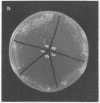Abstract
Deoxyribonucleic acid (DNA) from 250 strains of aerobic, nonfermentative, gram-negative coccobacilli and rods were tested for the ability to transform a stable competent auxotroph of Acinetobacter (strain trp E 27) to prototrophy by using the method established by Juni. Several modifications of Juni's original procedure were made to adapt it for use in a clinical diagnostic laboratory. These modifications were directed primarily towards shortening the procedure to allow completion in a time framework consistent with current procedures. The modifications included changes in sterilization temperature, incubation time and temperature of the competent auxotroph and DNA preparation, overnight incubation temperature, and variations in the age of the auxotroph culture when used. Under these conditions, the transformation can easily be performed in 24 h, the final 16 to 18 h being an overnight uninterrupted incubation period. When used in conjunction with the glucose oxidative fermentative basal metabolism test, it provided a rapid highly efficient means for grouping and identifying acinetobacters which is far superior to a biochemical schema. Without exception, the 141 strains of DNA from Acinetobacter species were able to transform the auxotroph to prototrophy. None of the 105 oxidase-positive nonfermenters possessed DNA which was able to transform the Acinetobacter auxotroph to prototrophy.
Full text
PDF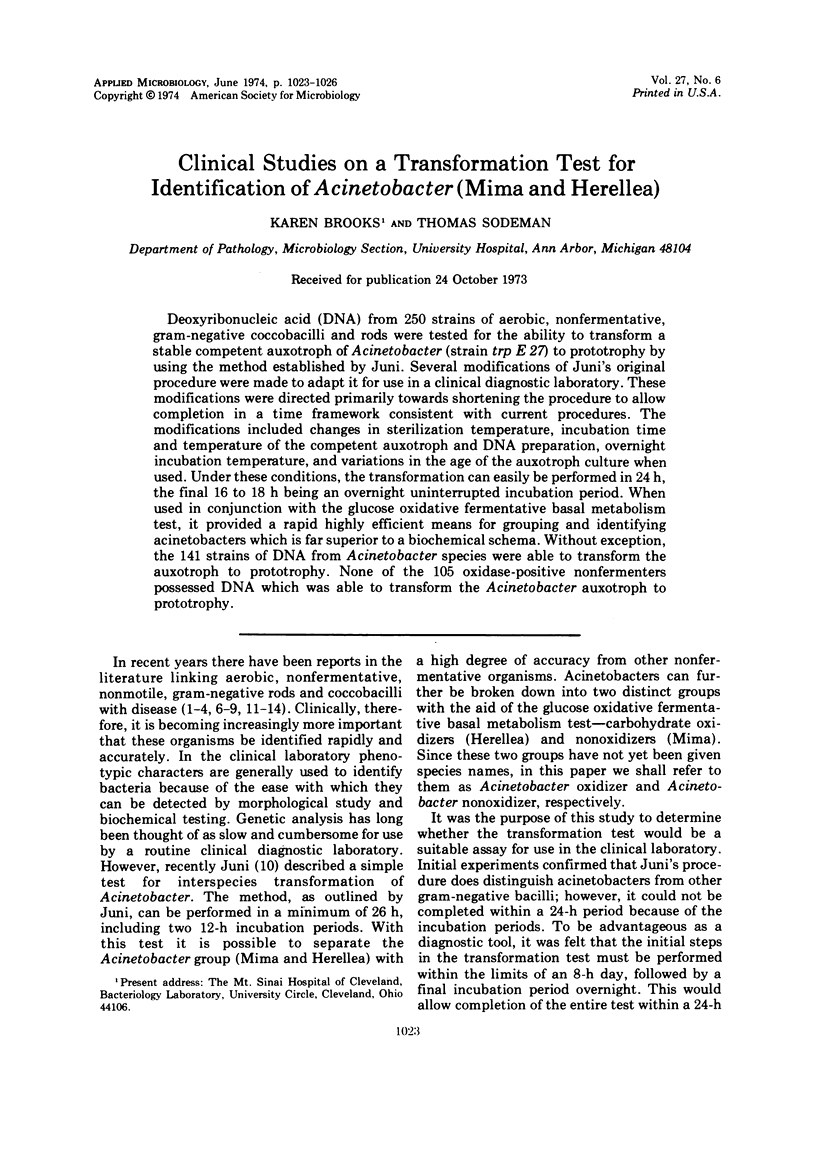
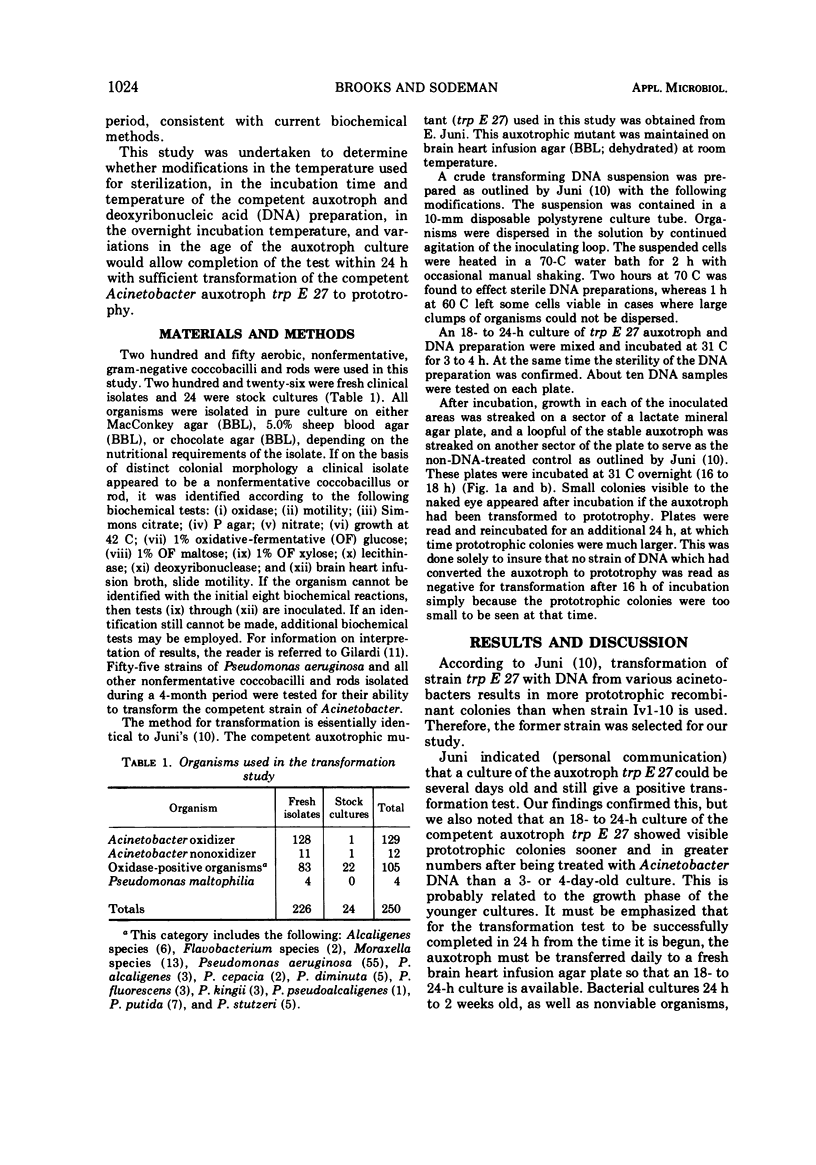
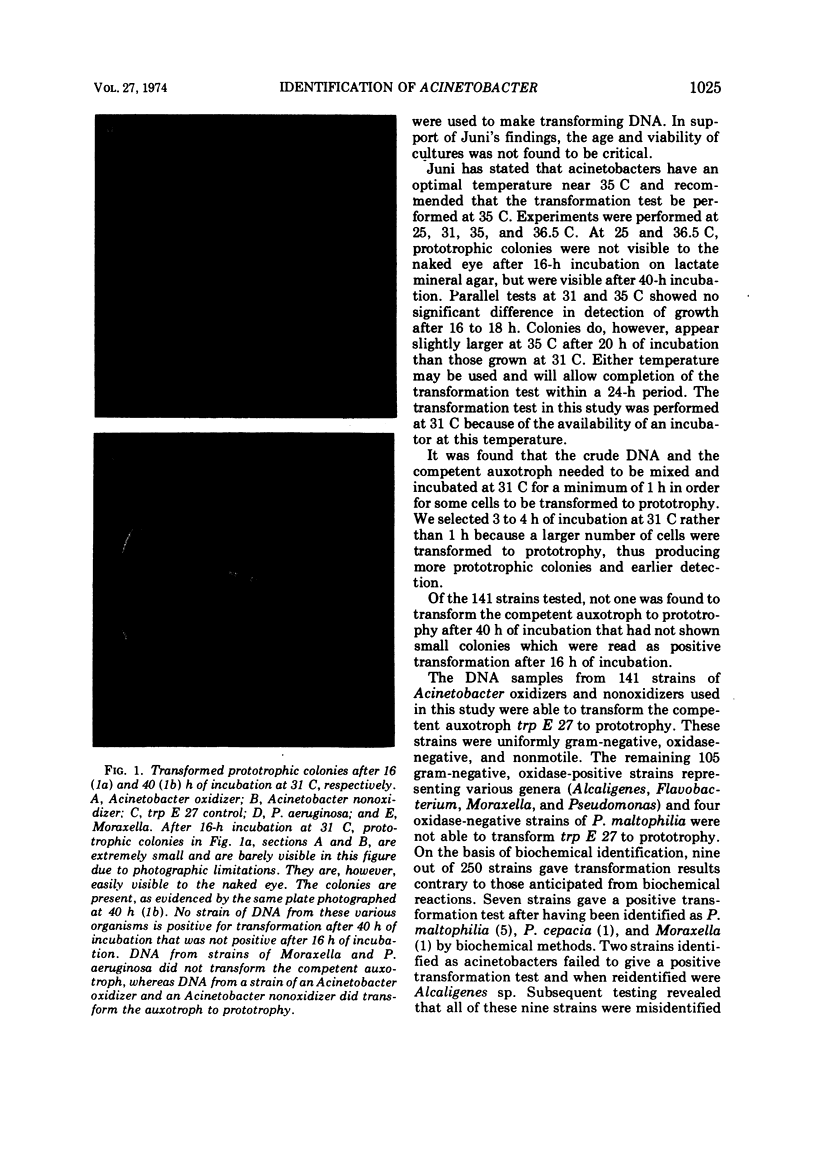
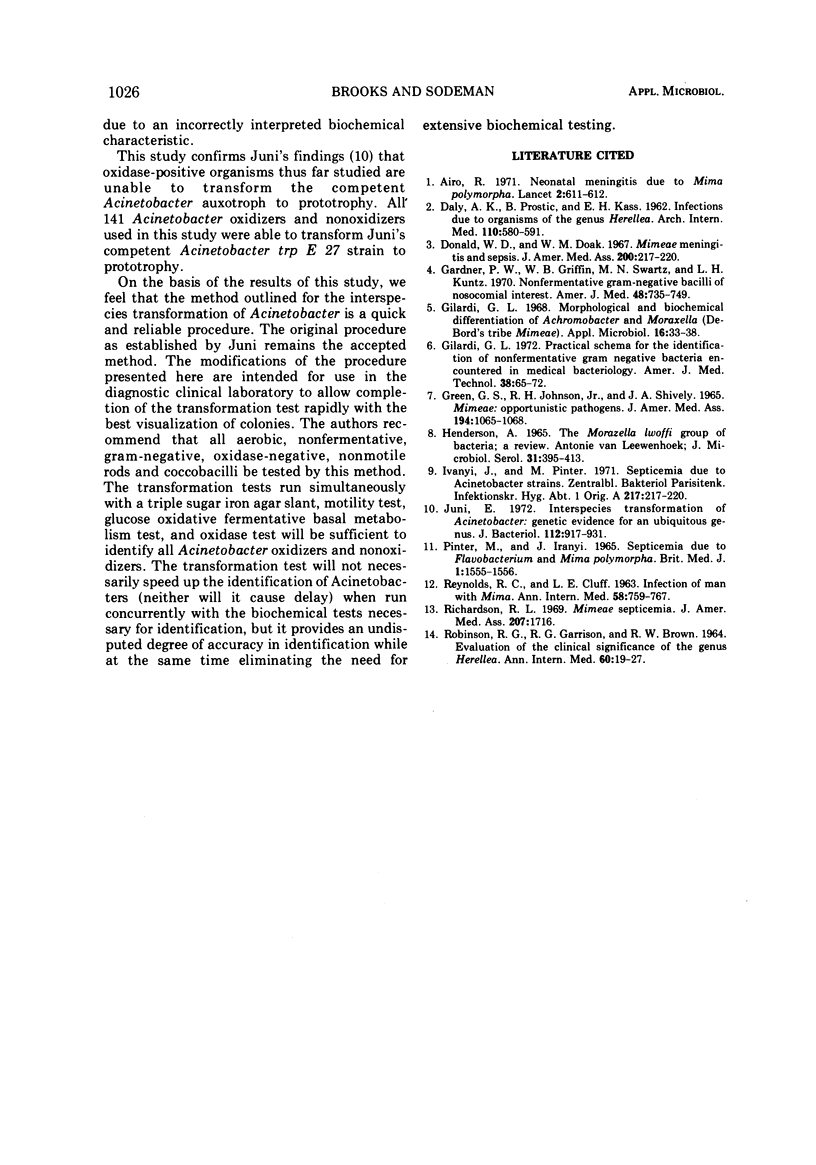
Images in this article
Selected References
These references are in PubMed. This may not be the complete list of references from this article.
- Airò R., Apollonio T., Pranzo A. Neonatal meningitis due to Mima polymorpha. Lancet. 1971 Sep 11;2(7724):611–612. doi: 10.1016/s0140-6736(71)92196-9. [DOI] [PubMed] [Google Scholar]
- DALY A. K., POSTIC B., KASS E. H. Infections due to organisms of the genus Herellea. B5W and B. anitratum. Arch Intern Med. 1962 Nov;110:580–591. doi: 10.1001/archinte.1962.03620230026006. [DOI] [PubMed] [Google Scholar]
- Gardner P., Griffin W. B., Swartz M. N., Kunz L. J. Nonfermentative gram-negative bacilli of nosocomial interest. Am J Med. 1970 Jun;48(6):735–749. doi: 10.1016/s0002-9343(70)80009-2. [DOI] [PubMed] [Google Scholar]
- Gilardi G. L. Morphological and biochemical differentiation of Achromobacter and Moraxella (DeBord's tribe Mimeae). Appl Microbiol. 1968 Jan;16(1):33–38. doi: 10.1128/am.16.1.33-38.1968. [DOI] [PMC free article] [PubMed] [Google Scholar]
- Gilardi G. L. Practical schema for the identification of nonfermentative gram negative bacteria encountered in medical bacteriology. Am J Med Technol. 1972 Mar;38(3):65–72. [PubMed] [Google Scholar]
- Green G. S., Johnson R. H., Jr, Shively J. A. Mimeae: opportunistic pathogens.A review of infections in a cancer hospital. JAMA. 1965 Dec 6;194(10):1065–1068. doi: 10.1001/jama.194.10.1065. [DOI] [PubMed] [Google Scholar]
- Henderson A. The Moraxella iwoffi group of bacteria; a review. Antonie Van Leeuwenhoek. 1965;31(4):395–413. doi: 10.1007/BF02045919. [DOI] [PubMed] [Google Scholar]
- Iványi J., Pintér M. Septicaemia due to acinetobacter strains. Zentralbl Bakteriol Orig A. 1971 Jun;217(2):217–220. [PubMed] [Google Scholar]
- Juni E. Interspecies transformation of Acinetobacter: genetic evidence for a ubiquitous genus. J Bacteriol. 1972 Nov;112(2):917–931. doi: 10.1128/jb.112.2.917-931.1972. [DOI] [PMC free article] [PubMed] [Google Scholar]
- PINTER M., IVANYI J. SEPTICAEMIA DUE TO FLAVOBACTERIUM AND MIMA POLYMORPHA. Br Med J. 1965 Jun 12;1(5449):1555–1555. doi: 10.1136/bmj.1.5449.1555-a. [DOI] [PMC free article] [PubMed] [Google Scholar]
- REYNOLDS R. C., CLUFF L. E. Infection of man with Mimeae. Ann Intern Med. 1963 May;58:759–767. doi: 10.7326/0003-4819-58-5-759. [DOI] [PubMed] [Google Scholar]
- ROBINSON R. G., GARRISON R. G., BROWN R. W. EVALUATION OF THE CLINICAL SIGNIFICANCE OF THE GENUS HERELLEA. Ann Intern Med. 1964 Jan;60:19–27. doi: 10.7326/0003-4819-60-1-19. [DOI] [PubMed] [Google Scholar]
- Richardson R. L., Jr Mimeae septicemia. JAMA. 1969 Mar 3;207(9):1716–1717. doi: 10.1001/jama.1969.03150220132027. [DOI] [PubMed] [Google Scholar]




